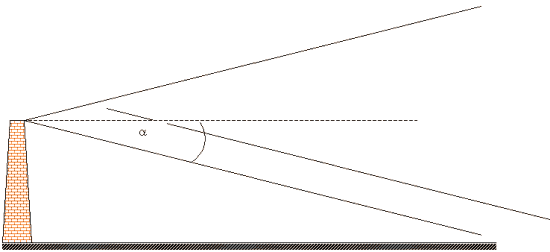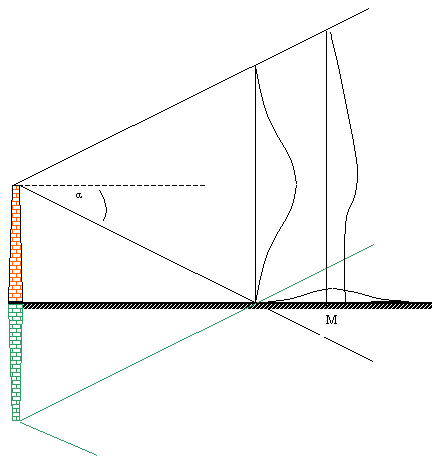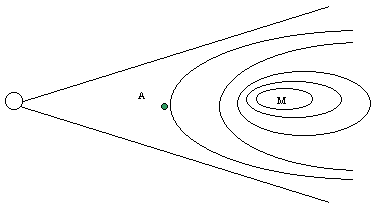| A Rough and Ready Model | |
|
|
|
 |
RS SCORER (METEOROLOGY OF AIR POLLUTION, ELLIS HORWOOD) EXPRESSES THE VIEW THAT WITHIN LIMITS OF PRACTICALITY IT IS POSSIBLE TO CONSIDER THE PLUME AS A SIMPLE CONE. |
 |
|
|
The angle Scorer addresses a simple technique to calculate the maximum ground level concentration Pmax . This will occur at a distance from a chimney of height h |
|
 |
|
|
If the cone is symmetrical and all the pollutant hitting the ground is reflected as shown above using a virtual source to account for reflection. When the plume first impinges on the ground and there is no absorption, the fact that there is no dispersion through the ground and that there is no absorption is represented by having an image source in the position shown. The implication is that the concentration is double what it would have been had the ground not have been present. Very roughly this occurs at about 1.4 times the distance of the first grounding of the plume. The plume usually meets the ground at a position of 10-20 chimney heights from the source. |
|
 |
|
|
The concentration at the centre of the plume above m is about 2.5 times the average across the plume. Thus the concentration at ground level is twice that average. The cross section of the plume is a circle about 1.4 x stack height - or more correctly effective stack height H (see the discussion on this below) and has an area of 5.7 x H2. If Q is the rate of production of effluent and U is the wind speed then Q=5.7xH2xUx (Pmax/2) Which gives an approximation: Pmax= Q/3UH2 This model is based on crude guesses but it will not be too far wrong since it is based on two facts: The pollution moves with the wind and the concentration at the edge of the plume is zero. |
|
|
Task 3: With a pencil and large piece of graph paper consider a plume with a spreading angle such that the plume grounds at 15 stack heights. Using the crude approach expressed above show why we would expect two maxima to occur if we have an inversion at about forty times the effective chimney height of the stack and estimate the distances at which the two maxima occur. |
|
|
The model above predicts a distribution symmetrical with respect to y and with respect to z., with dispersion equal in both directions. This implies that Thus the typical plume shape is an ellipse with its long axis horizontal and this is accommodated in the Gaussian models. To use these models we need to know the values of |
|